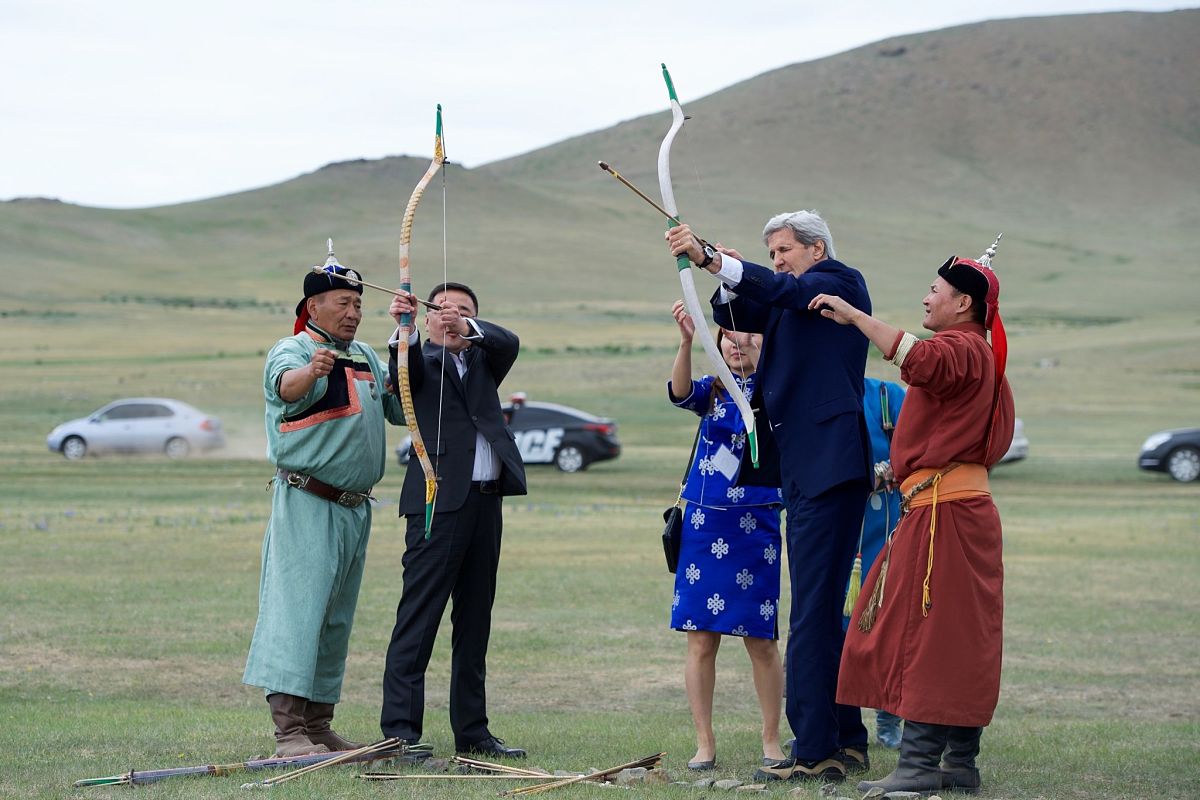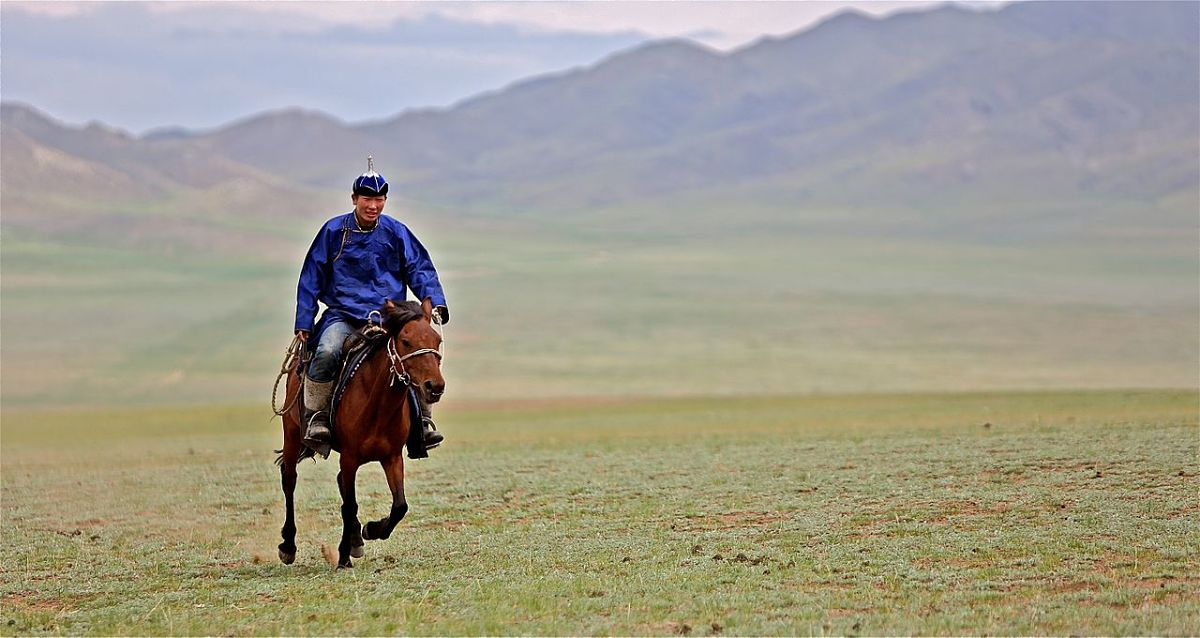Mongolia - Culture, Etiquette and Business Practices
Сайн уу? (Hello) and Welcome to our Guide to Mongolian Culture, Customs, Business Practices & Etiquette
What will you Learn About Mongolia?
You will gain an understanding of a number of key areas including:
- Language
- Religion and beliefs
- Culture and society
- Social etiquette and customs
- Business culture and etiquette
Stereotyping
Remember this is only a very basic level introduction to Mongolia, the culture and the people; it cannot account for the diversity within Mongolian society and is not meant in any way to stereotype all people you may meet in the country!
Facts and Statistics
- Location: Landlocked and located in Northern Asia, with Russia to the North and China to the South. The country geography is marked by mountain ranges, deserts / semideserts, upland steppes and pasture lands which are used to graze the livestock for which Mongolia is so well known. The country is prone to seismic movement and earthquakes.
- Climate: Desert; extreme continental with limited summers and extensive cold winters. On the whole, the weather is cold and dry, with approximately 250 cloudless days a year.
- Capital: Ulaanbaatar
- Population: 3,103,428 (July 2018 est.). Mongolia has one of the lowest average population densities in the world.
- Ethnic Make-up: Khalkh 81.9%, Kazak 3.8%, Dorvod 2.7%, Bayad 2.1%, Buryat-Bouriates 1.7%, Zakhchin 1.2%, Dariganga 1%, Uriankhai 1%, other 4.6% (2010 est.)
- Government: Representative Democratic Republic
Language in Mongolia
Mongolian 90% (official) (Khalkha dialect is predominant), Turkic, Russian (1999).
The Mongolian language is the largest member of the Mongollic language group.
It is made up of Mongolian Halh which is spoken in the Mongolian People’s Republic and the mutually intelligible Peripheral Mongolian, which is spoken in the Inner Mongolian Autonomous Region (IMAR). Chinese Mandarin joins Peripheral Mongolian as an official language in IMAR.

Archery is deeply connected to Mongolian culture. Archers in traditional Mongolian outfits guide U.S Secretary Kerry as he prepares to shoot an arrow (2016). Photo By U.S. Department of State from United States, Public Domain.
Mongolian Society & Culture
Mongolian Family Values
- Families are typically fairly tight knit and interdependent. They are usually large, with four or more children.
- Mothers who give birth to five children or more are rewarded with an ‘honoured mother’ award.
- Extended families typically live near or with each other. This network offers extensive support to the family members.
Religion in Mongolia
- The Mongols primarily adhere to Tibetan Buddhism, which is known as Lamaism. Prior to the introduction of Buddhism however, people tended to follow Shamanism.
- The political regime in 1921 sought to introduce a secular structure and, as such, engaged in a period of closing monasteries, confiscating land and forcing monks to renounce their religion. Those that refused were killed.
- In the 1940s however, the re-opening of a monastery in the capital became a catalyst for change and the government started allowing monks to take part in South East Asian Buddhist conferences.
- Changes really took effect however in the 1990s, following the removal of the one-party rule. Monasteries and temples were re-built and Buddhism saw a resurgence of followers and daily practices.
- The makeup of religious belief in the country is currently fairly diverse. Approximately 1/3 of people are Shamans, 1/3 are Buddhist and the majority of the remaining population are atheist with small pockets of Muslims and Christians (assessed as 3% and 2% respectively).
Mongolian Etiquette and Manners
Mongolian culture is a rich melting pot of shamanism and Buddhist beliefs with an infusion of nomadic values and traditions. The Marxist beliefs forced onto the countries during the socialist period have started to disappear within the country.
Meeting Etiquette
- Initial greetings can be fairly formal and follow a set protocol of greeting the eldest or most important person first.
- A standard handshake, with direct eye contact and a welcoming smile will suffice.
- Business is typically conducted on first name basis, so it’s important you remember first names.
- Using phrases such as ‘Sain bain uu’ (are you well?) will be appreciated by your counterparts. If someone addresses you in this way, then reply with ‘Sain’ (I’m well).
Gift Giving Etiquette
- Gift giving in Mongolia is full of symbolism, which makes it important therefore, to think your gift through properly.
- Whether a gift has an opening which faces upwards or downwards can carry different meanings in Mongolia.
- Gifts with downward facing openings are believed to incur loss, while those with upward openings are deemed to incur growth, increase or prosperity. For this reason, traditional slippers from your home country would be a well received gift, but a hat would not.
- It is generally believed by Mongols, that a man’s belt carries luck. As such a belt can be a good gift for your male counterparts.
- Silk, in the form of a scarf or purse is usually received well by females.
- Alternatively, nice pastries are usually well received.
- Gifts from your home town / country indicate that you have put thought into the gift which means that they carry extra esteem.
- If you are a male, bringing a gift to a female, then we suggest you present it as a gift from your wife or mother.
- Gifts are generally opened in private.

Horses are riding are synonymous with Mongolian culture. However, with time the traditional aspects of Mongolian living are starting to fade as people move into large towns and cities. Photo By Al Jazeera English - Flickr. Uploaded by PDTillman, CC BY-SA 2.0
Dining Etiquette
- Dining etiquette in Mongolia are usually casual affairs which carry many of the practices which typified nomadic life.
- Eating together and around a table is not therefore the norm for most Mongol families. Instead, family members tend to eat as and when they are able.
- Although some Mongol families may have a table, this is not the norm and many others sit on the floor to eat. If you are required to sit on the floor, then tuck your feet under your bottom and ensure they point away from the dining mat.
- If you are invited to a Mongol home for food, then punctuality is important so arrive on time.
- Try to eat a little of everything you are given and accept each offering with your right hand.
- Be prepared to eat a lot of meat, which has been cooked in a wok without seasoning – although salt is typically used. Flour, rice and potatoes are also a typical addition.
- The most common Mongol foods come in the form of stews or thick soups. Also expect to eat dumplings, bread, mutton pancakes and a special Mongol pasta made from noodles, meat, carrots and potatoes.
- It is customary to drink a cup of black tea known as Khar tsai before staring the meal as this is believed to help digestion. When you are passed the cup of tea, you should hold the bottom of the cup and take a sip before putting the cup on the table.
- Alcohol and a milk drink with salt, known as Süütei tsai, might also be included during meals.
- You should also expect shots of Vodka to be included at points in the meal.
Buuz is a type of Mongolian steamed dumpling filled with meat. An example of authentic Mongolian cuisine, it is traditionally eaten at home during Tsagaan Sar, the Lunar New Year. You can also find it at restaurants and small cafes throughout the capital of Ulaanbaatar. Photo by Mizu_Basyo - Cooked by Mongolian Restaurant "Chinggis Khaan", Tokyo, JAPAN, CC BY-SA 3.0
Tipping
- Mongolia is not a rich country and people tend to earn low wages. Although tipping is a relatively new concept to Mongolia, people don’t always expect a tip – but tips are gratefully received due to low wages.
- Tips should be paid in Mongolian Tögrög. The equivalent of $10 per day is an acceptable tip for guides and long-distance taxi drivers (don’t underestimate the efforts that taxi drivers make when driving long distances over difficult terrain) and 10% of the restaurant bill should be paid to waiting staff.
- Ensure tips are paid as cash in local currency to waiting staff and not included as an addition to card payments. There are no hard or fast rules for tipping in bars, but we suggest $1 per round of drinks and $1 per day for hotel housekeepers.
Business Culture and Etiquette in Mongolia
If you're looking for expert help and advice on how to work effectively with Mongolians, then this is what we do!
Click here to learn more about our customized cultural training.
Building Relationships & Communication
- Mongolia is a relationship-driven culture, so it is important to prepared to build relationships before agreements are made.
- Many Mongols prefer to have third parties introduced to them by an intermediary that they know or trust. By developing your relationships therefore, you may find it easier to make contact with other Mongols with whom you have no existing relationship in other businesses.
- Small talk at the beginning of meetings is essential to building the trust needed to advance your business plans. Mongols are very proud of their heritage, so consider complimenting your counterparts on their country and culture as this will be well received.
- Ignoring small talk and jumping too quickly into business discussions is likely to give the impression that you are more interested in the business than in your relationship. This will not benefit you.
- Expect your counterparts to show little respect for personal space. Mongols tend to live in close proximity to each other. For example, it’s not uncommon for Mongol families to all sleep in the same bed. You might also see people sitting on each other’s laps when on public transport. People are also likely to be fairly tactile when communicating; it’s not unusual for men, for example, to place a hand on each other’s shoulders when talking.
If someone comes particularly close to you when talking, then avoid stepping back to increase your personal space as this would be considered offensive. - There is clearly an inappropriate level of touching which spans all cultures and should be avoided – for example, touching someone’s leg. Also avoid touching someone’s head as heads are sacred in Buddhist belief.
- Be alert for nuances and hidden meanings. It is a good idea to repeat details, as you understand them to confirm that you and your business colleagues are in agreement.
Chinggis Square in Ulaanbaatar; the capital and largest city of Mongolia. Photo by Zazaa Mongolia - Own work, CC BY-SA 4.0
Business Meeting Etiquette
- Appointments are necessary and should be made 1 to 2 weeks in advance, preferably by e-mail or telephone.
- Punctuality is important and you should ensure that you arrive on time. If you are likely to be late then contact your counterparts in advance and advise them that this is the case.
- Business cards are an important part of Mongol business. The etiquette of presenting / receiving business cards with both hands which is common in other Asian countries, is not a part of Mongol culture.
- The person you are meeting with may accept telephone calls and attend to other business while you are there.
- Have all printed material translated and ensure that you have arranged for an interpreter if you feel this might be necessary.
- Be aware that any difficult questions may be directed at your intermediary to avoid causing any discomfort in your relationship.
Business Negotiations
- Mongols respect status and qualifications. As such, the most senior and qualified person within your group should lead your negotiation party.
- Decisions are typically made outside of the meetings themselves. Outcomes are discussed and agreed by those included in the negotiation party privately.
- Mongols have a difficult time publicly disagreeing, so do not think that things are going well simply because no one is challenging what you say.
If you have negative feedback, then consider giving this directly on a one to one basis with the negotiation leader of the Mongol party. Avoid doing it publicly if possible. - Do not employ aggressive tactics as this will undoubtedly lead to a loss of trust and an end to negotiations. Instead tactfully repeat important points after they have been stated.
What to Wear
- Business wear generally mirrors that of the West.
- It is important that you dress well if you want to make a good impression.
Hierarchy
- Although great deference is shown to seniors, there tends to be very little hierarchy in Mongolia.
- For example, Mongolia is even less hierarchical than the USA.
- This lack of hierarchy goes hand in hand with individualism in Mongolia and individuals are expected to contribute their feelings, thoughts and views.
- They are certainly not required to defer their opinions to those of their managers or superiors.
Approach to Change
- Mongolia’s intercultural readiness for change is very low. As such, they tend to avoid change if this can be helped. Although changes are made, they are made slowly and require a considerable amount of thought, planning and evaluation.
- Failure in Mongolia creates long term loss of confidence by the individual as well as by others and is not viewed as a positive opportunity to learn from mistakes as it may be in more risk-tolerant countries.
- Because of this attitude it is important for innovations to have a track record noting the benefits if they are to be accepted and implemented.
Approach to Time and Priorities
- Mongols place considerable emphasis on punctuality.
- Ensure therefore that you are on time and that you adhere to any pre-arranged deadlines.
Boss or Team Player?
- Managers in Mongolia typically include their team members in decision making and value their contribution.
- The low power distance in Mongol business set ups means that teams tend to work collectively and to make collective decisions.
Want to explore more about culture? Then you need to head on over to our Culture Vulture who can show all the free resources and information we have available!
Do you need to cite this page for school or university research?
Please see below examples.
Simply change the country name depending on which guide you are referencing.
MLA Format:
Commisceo Global Consulting Ltd. Afghanistan - Language, Culture, Customs and Etiquette. www.commisceo-global.com. 1 Jan. 2020 https://commisceo-global.com/resources/country-guides/afghanistan-guide
APA Format:
Commisceo Global Consulting Ltd. (2020, January 1) Afghanistan - Language, Culture, Customs and Etiquette. Retrieved from https://commisceo-global.com/resources/country-guides/afghanistan-guide
Harvard Format:
Commisceo Global Consulting Ltd. (2020). Afghanistan - Language, Culture, Customs and Etiquette. [online] Available at: https://commisceo-global.com/resources/country-guides/afghanistan-guide [Accessed ENTER DATE].
 info@commisceo-global.com
info@commisceo-global.com +44 0330 027 0207 or +1 (818) 532-6908
+44 0330 027 0207 or +1 (818) 532-6908




